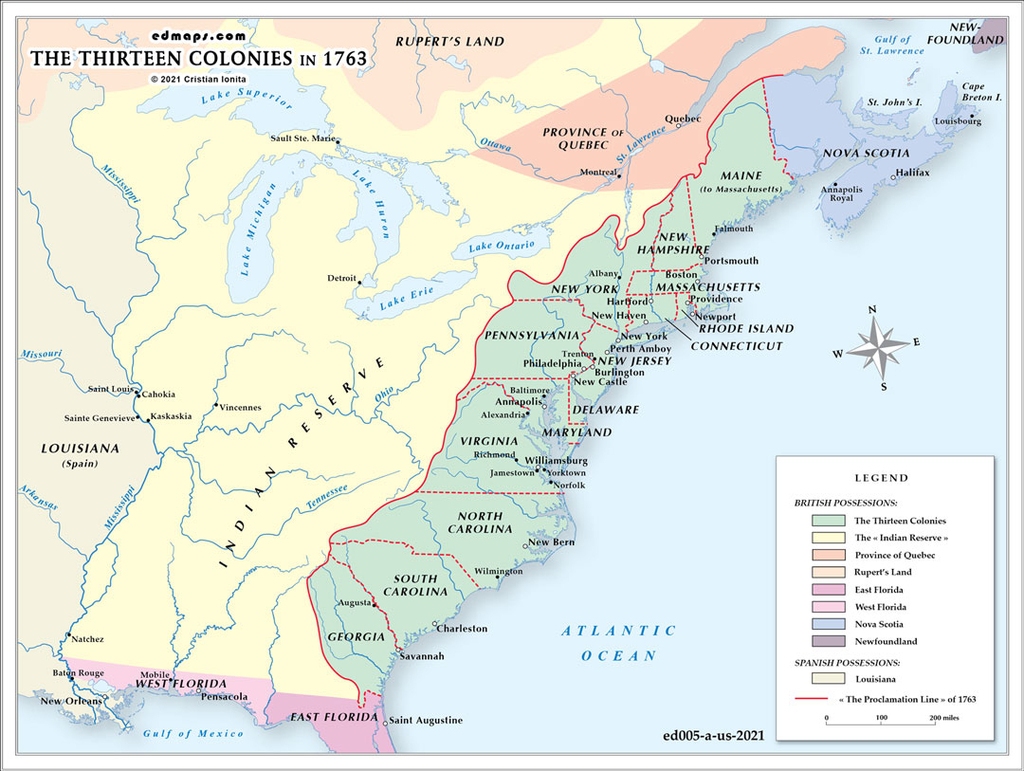

In 1763, following the Treaty of Paris that ended the Seven Years' War (French and Indian War), the thirteen American colonies existed within a dramatically transformed territorial landscape under British rule.
The thirteen colonies stretched along the Atlantic seaboard: New Hampshire, Massachusetts (including present-day Maine), Rhode Island, Connecticut, New York, New Jersey, Pennsylvania, Delaware, Maryland, Virginia, North Carolina, South Carolina, and Georgia. Each colony possessed distinct governmental structures, with royal colonies (Virginia, New York, New Jersey, North Carolina, South Carolina, Georgia), proprietary colonies (Pennsylvania, Delaware, Maryland), and charter colonies (Massachusetts, Rhode Island, Connecticut, New Hampshire) operating under different administrative frameworks.
The Treaty of Paris transferred vast French territories east of the Mississippi River to British control, including the Great Lakes region and the Ohio Valley. This acquisition effectively doubled British North American territory and opened enormous possibilities for colonial expansion westward from the Appalachian Mountains.
King George III's Royal Proclamation of 1763 established a boundary line along the Appalachian crest, prohibiting colonial settlement west of this demarcation. This policy aimed to prevent conflicts with Native American tribes, reduce administrative costs, and maintain imperial control over westward expansion. The proclamation created immediate tensions with colonists who viewed western lands as rightful expansion territory.
Britain established new governmental structures for acquired territories, including the provinces of Quebec, East Florida, and West Florida. These additions required new administrative frameworks and military garrisons, significantly increasing imperial expenses.
Several colonies possessed sea-to-sea charter claims extending theoretically to the Pacific Ocean, including Virginia, Massachusetts, Connecticut, North Carolina, South Carolina, and Georgia. These overlapping claims would later create significant territorial disputes. The proclamation effectively suspended these western claims, generating resentment among colonial land speculators and settlers who had invested in western ventures.

Lorem ipsum dolor sit amet, consectetuer adipiscing elit. Aenean commodo ligula eget dolor. Lorem ipsum dolor sit amet.

Lorem ipsum dolor sit amet, consectetuer adipiscing elit. Aenean commodo ligula eget dolor. Lorem ipsum dolor sit amet.

Lorem ipsum dolor sit amet, consectetuer adipiscing elit. Aenean commodo ligula eget dolor. Lorem ipsum dolor sit amet.